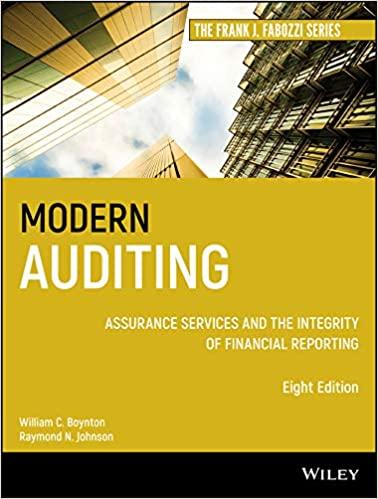ACCOUNTS RECEIVABLE JOURNAL ENTRIES Prepare journal entries to record the following transactions: (1) On December 15, 2008, the company recorded $150,000 sales on credit. (2) On December 31, 2008, the company estimated bad debt expenses of $15,000. (3) On January 12, 2009, collect $100,000 worth of accounts receivable. (4) After many collection attempts, the Company determined on June 15, 2009 that it would not collect $10,000 in accounts receivables from Pendant Publishing. It decided to write-off this account. (5) On July 15, Pendant Publishing called to say that they have had financial problems but can afford to pay $7,000 to settle their $10,000 debt in full. Vandolay Industries agreed to these terms, and reversed $7,000 of the prior write-off. It received a $7,000 check from Pendant the next day. Post the above entries to the following T-accounts: Accounts Receivable Allowance for Doubtful Accounts 7-1 ESTIMATION AND RECORDING OF UNCOLLECTIBLE ACCOUNTS - AGING OF ACCOUNTS RECEIVABLE METHOD Part 1 - In 2009, Vandolay reported $300,000 in sales. The company's allowance for doubtful accounts has an unadjusted credit balance of $12,000. Vandolay Industries accountants prepared the following Aging of Accounts Receivable: Customer Alpha Sales Gamma Manufacturing Co. Delta Shipping Corp. Epsilon Industries Theta Manufacturing Zeta Industries Other customers Totals Number of days unpaid Total 0-30 30-60 60-90 Over 90 $ 700 $ 700 1,900 $ 1.900 2.200 $2,200 6,000 $6,000 1.800 1,800 600 600 136,800 88,100 26,900 9,800 12,000 $150,000 $90,000 $30,000 $12,000 $18,000 Vandolay accountants believe that receivab 0-30 days old have a 2% chance of noncollection Receivables 30-60 days old have a 4% chance of noncollection. Receivables 60-90 days old have an 8% chance of noncollection. Receivables over 90 days old have a 20% chance of noncollection. The company's allowance for doubtful accounts has an unadjusted credit balance of $12,000. Prepare the required adjusting journal entry. Bad Debt Expense Allowance for Doubtful Accounts 7-2 Part 2 - Assume instead that the company's allowance for doubtful accounts has an unadjusted debit balance of $400. Prepare the required adjusting journal entry. Bad Debt Expense Allowance for Doubtful Accounts 7-3 ESTIMATION AND RECORDING OF UNCOLLECTIBLE ACCOUNTS - PERCENTAGE OF CREDIT SALES RECEIVABLE METHOD Part 1 - In 2009, Vandolay reported $300,000 in sales. The company's allowance for doubtful accounts has an unadjusted credit balance of $12,000. Based on prior experience, management estimates that 2.5% of sales will result in bad debts. Prepare the required adjusting journal entry. Bad Debt Expense Allowance for Doubtful Accounts Part 2 - Assume instead that the company's allowance for doubtful accounts has an unadjusted debit balance of $400. Prepare the required adjusting journal entry. Bad Debt Expense Allowance for Doubtful Accounts 7-4 NOTES RECEIVABLE On April 1, 2008, Vandolay loans a $10,000 note to a customer opening a new store. The note, which bears 10% annual interest, becomes due on March 31, 2009. Prepare the required journal entry. Note Receivable Cash On December 31, 2008, Vandolay accrued interest for the portion of the year that the note was outstanding. Prepare the required adjusting journal entry. Interest Receivable Interest Revenue 7-5 On March 31, 2009. Vandolay received all interest and principal for the note. Prepare the required journal entry for the receipt of interest:. Interest Revenue Interest Receivable 750 Beg. Bal Cash account omitted] Prepare the required journal entry for the receipt of principal. [Cash account omitted] Note Receivable 10,000 Beg. Bal. 7-6












